Ready to turn a patch of dirt into a home under the stars? A great camping trip starts with a smart setup. Going beyond just pitching a tent, thoughtful camp organization creates your perfect outdoor haven where memories happen.
First-timers and trail veterans alike benefit from strategic planning that prevents common frustrations and weather surprises. When your camp flows well—with dedicated zones for cooking, sleeping, and hanging out—outdoor living becomes truly enjoyable.
The right setup means less time struggling with gear and more time enjoying nature. These camp setup tips create a foundation for comfort that transforms basic camping into an experience worth repeating season after season.
Camping Set Up
Getting your campsite in order isn’t just about throwing your tent on the ground and calling it a day. A thoughtfully organized camp creates the foundation for your entire outdoor experience.
When done right, it transforms a basic patch of dirt into a functional, comfortable home base where you can rest, cook, laugh, and make memories.
A good camp setup prevents common frustrations like misplaced gear, uncomfortable sleeping arrangements, and wildlife encounters. It also helps you handle sudden weather changes without panic.
Taking time to plan your space pays off in countless ways – from easier meal prep to better sleep to more relaxing downtime.
For weekend trips or weeklong stays, these tips will help turn your outdoor space into a well-designed haven that meets all your needs while keeping you connected to the natural world around you.
1. Finding Your Perfect Spot
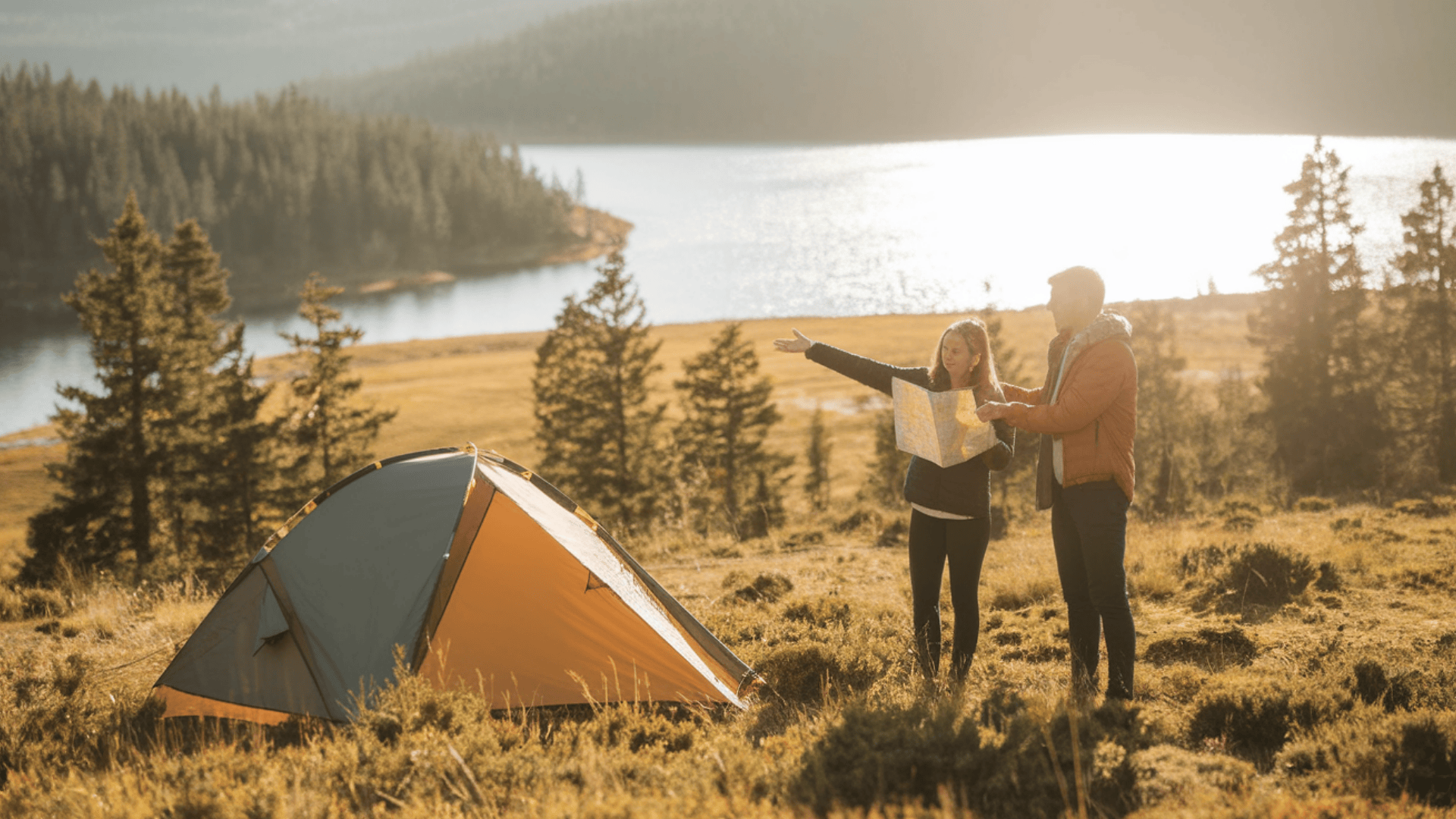
Before unpacking anything, take time to scout the area. The few minutes you spend finding the right spot will save hours of discomfort later. Look for:
- High ground that won’t flood if it rains
- Flat surfaces without rocks or roots
- Natural wind blocks like trees or large rocks
- Enough shade to keep cool during hot days
- Safe distance from water sources (at least 200 feet)
Arriving when there’s plenty of daylight gives you time to assess these factors without rushing. Remember that the sun’s position changes, so think about where shade will be when you most need it.
2. Tent First, Always
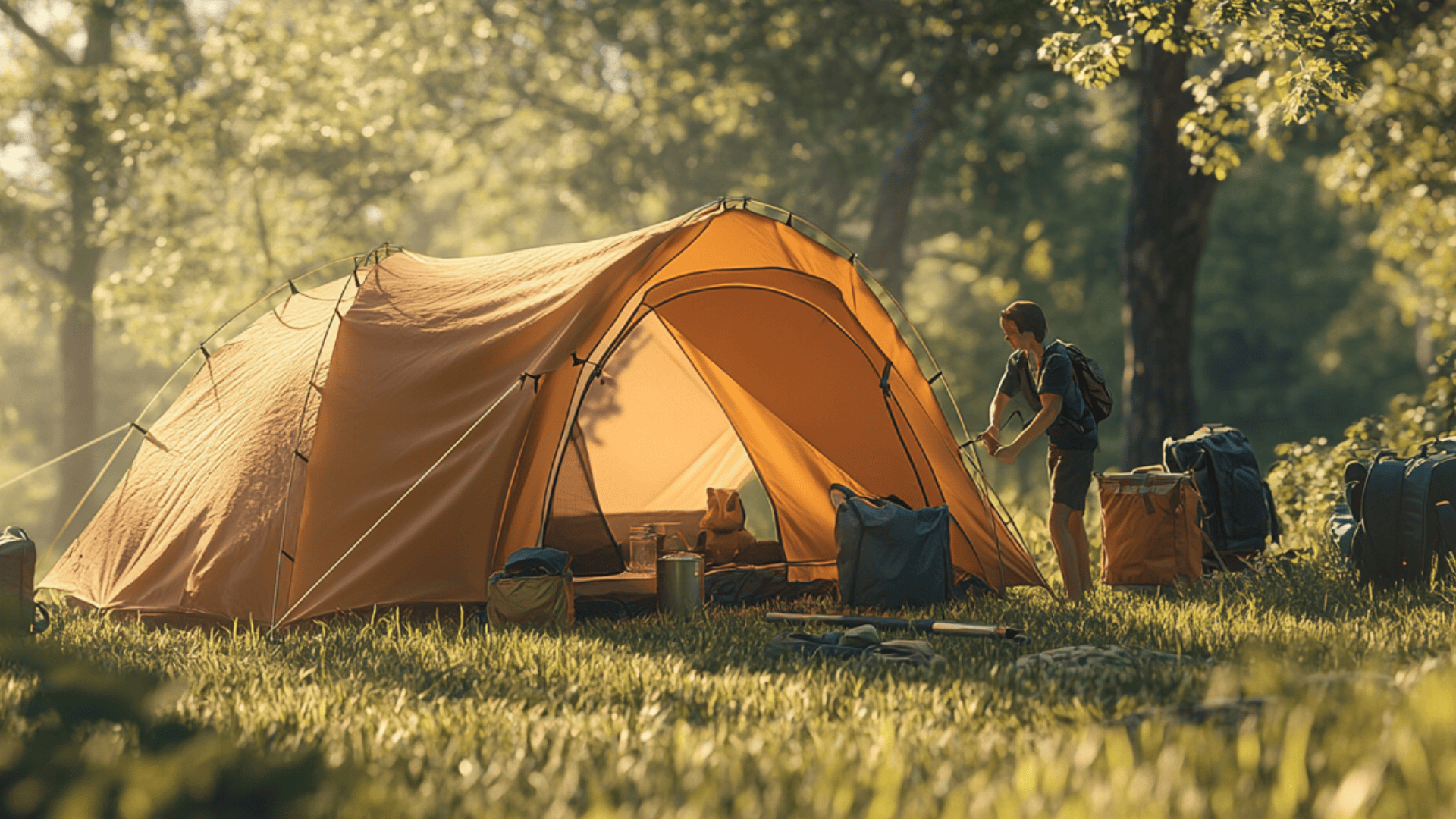
Your tent is command central for your camping trip. Setting up your sleeping quarters first gives you a home base for the rest of your setup process. Set it up before anything else because:
- It needs the most level ground in your site
- You’ll want shelter ready if the weather changes suddenly
- It’s easier to plan other areas once your sleeping space is established
- You can store gear inside while setting up the rest of camp
Put a tarp underneath to protect the bottom from moisture and tears. Make sure all stakes are secure and your rainfly is properly attached.
3. Creating Your Camp Living Room
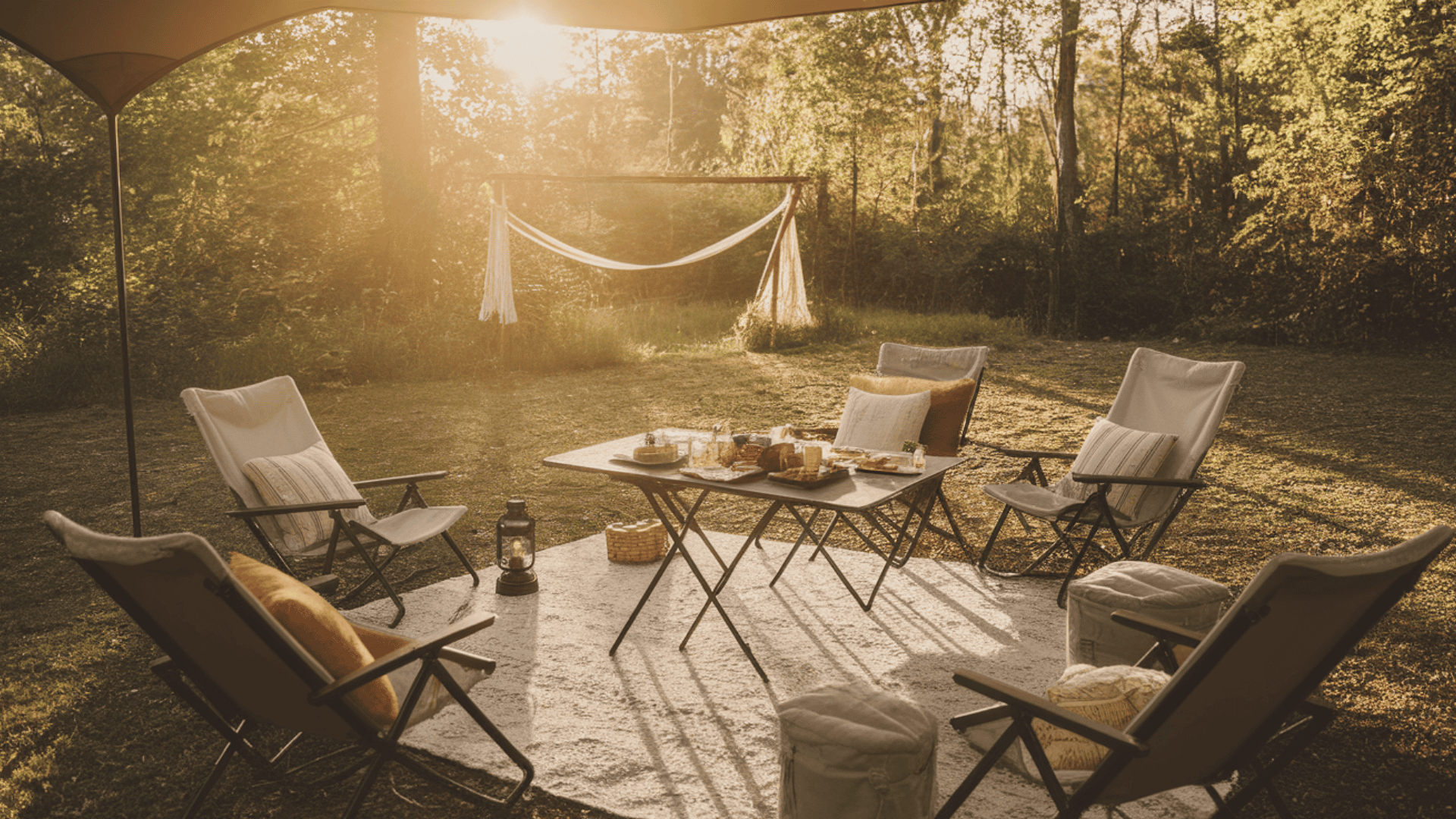
This is where you’ll spend most of your waking hours at camp. The right setup here turns basic camping into a true outdoor retreat. Make it comfortable with:
| ITEM | PURPOSE |
|---|---|
| Camp chairs | Relaxed seating |
| Folding table | Eating and game playing |
| Outdoor rug | Keeps dirt at bay |
| Canopy or tarp | Protection from sun/rain |
Adding small comforts like pillows or a hammock can really make your outdoor space feel like home. Position this area to catch morning sun if camping in cool weather or afternoon shade in hot conditions.
4. Kitchen Zone Basics
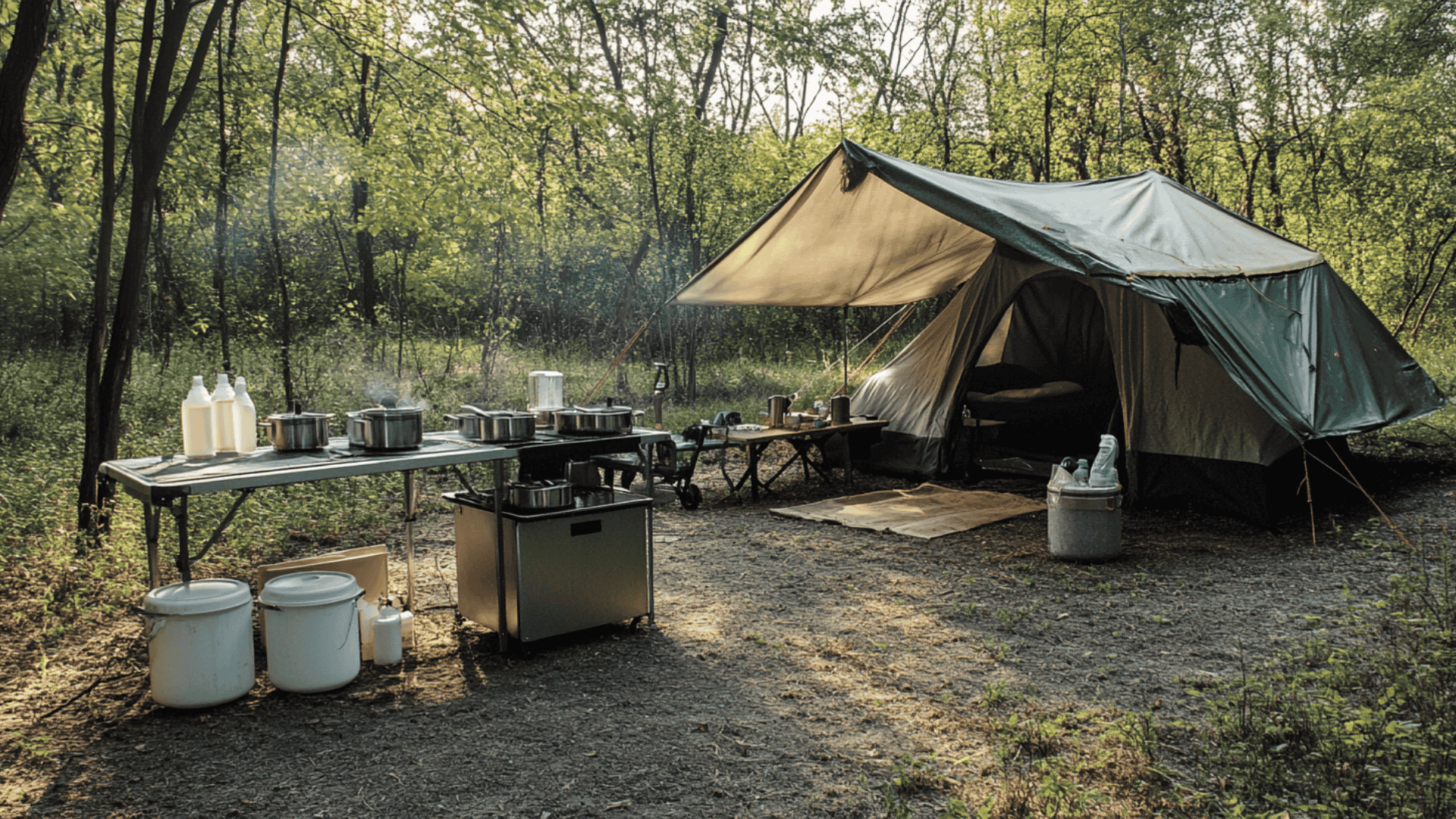
A well-planned cooking area makes your outdoor meals much more enjoyable. Keep it separate from your sleeping area for safety and comfort.
Good kitchen zones share some common features that make camp cooking a pleasure rather than a chore:
- Stability matters: Find flat ground for your stove to prevent spills and accidents
- Wind protection: Place your kitchen where natural barriers block strong gusts
- Food storage: Keep all food in sealed containers away from your tent
Setting up a simple wash station with a basin and biodegradable soap makes cleanup easy. Your future self will thank you for thinking ahead!
With these basics in place, you’ll be ready to cook up tasty meals without the hassle of a poorly organized space.
Essential Zones of a Well-Planned Campsite
A good campsite has distinct areas that serve different needs. Setting up these zones thoughtfully makes your camping trip more comfortable and fun.
Think of your campsite as a tiny outdoor home with rooms for sleeping, cooking, eating, and relaxing. Each zone should flow naturally into the next while maintaining enough separation for safety and comfort.
When you take time to plan these spaces well, you’ll find your camp life runs smoothly, leaving more time to enjoy the wilderness around you.
Shelter & Sleeping Zone
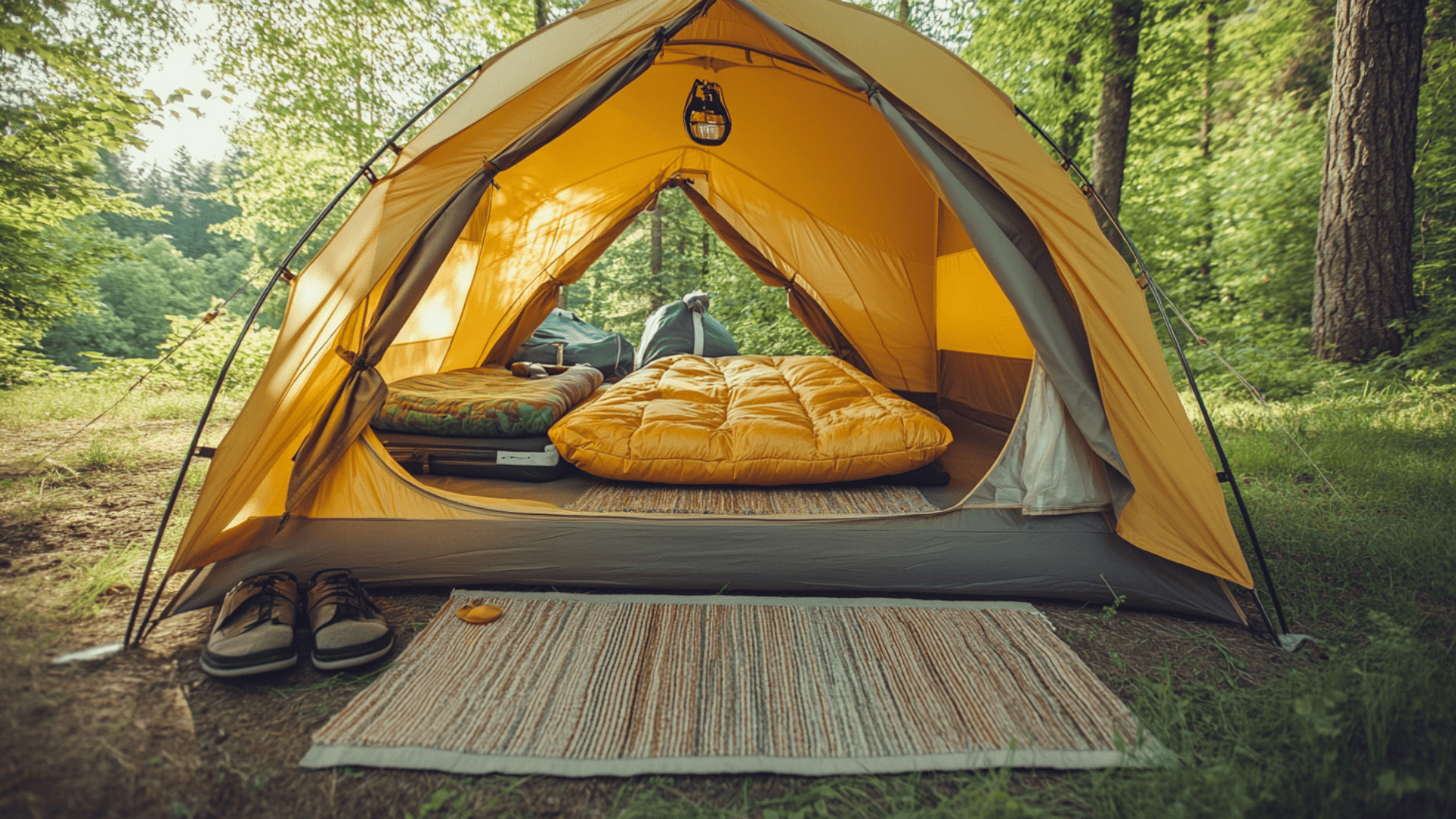
Your tent is where you’ll rest after long days outdoors, so getting it right matters. For comfort:
- Pick a tent that gives each person enough space – the “plus 2” rule works well (a 4-person tent for 2 people)
- Use a ground cover under your tent to stop moisture and protect the bottom
- Pack extra stakes and cords for windy conditions
- Create a spot to remove shoes at the entrance
PRO TIP: Place a small rug just inside your tent entrance to catch dirt and give you a clean spot to sit while removing shoes. This simple addition keeps your sleeping area much cleaner throughout your trip.
Inside your tent, keep things cozy with sleeping pads or air mattresses that lift you off the cold ground. Store clothes and personal items in waterproof bags to keep them dry.
A small battery light hanging from the ceiling makes nighttime much easier.
Kitchen & Food Storage
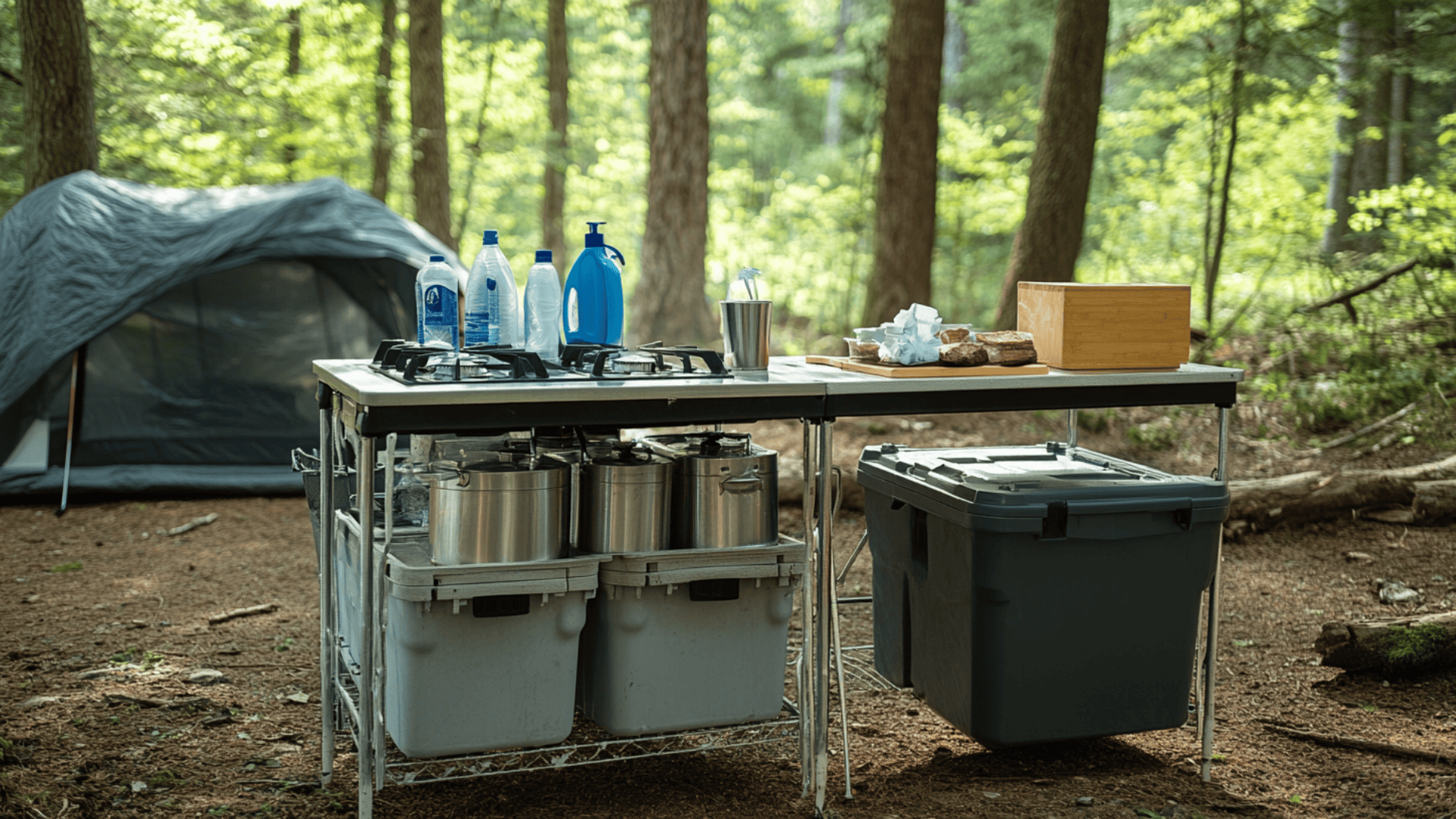
A good camp kitchen makes meal prep simple and keeps wildlife away from your food. Creating a functional outdoor cooking space transforms basic camping meals into enjoyable outdoor dining experiences.
The right setup saves time, reduces stress, and helps protect local wildlife by properly managing food scents and storage.
| MUST-HAVE ITEM | WHY IT MATTERS |
|---|---|
| Cooking table | Keeps food off the ground |
| Dual-burner stove | Lets you cook multiple items |
| Wash station | Makes cleanup simple |
| Secure storage | Prevents animal visits |
PRO TIP: Line your cooler with frozen water bottles instead of loose ice. They keep food cold longer, don’t create a watery mess as they melt, and provide cold drinking water once thawed.
Using separate coolers for drinks and food helps both stay cold longer since you won’t need to open the food cooler as often. Ice in the drink cooler can be used for drinks, while the food cooler stays untouched except during meal prep.
For areas with bears, proper storage isn’t optional—it’s essential. Use approved containers or follow local rules about hanging food from trees.
Lighting & Ambience
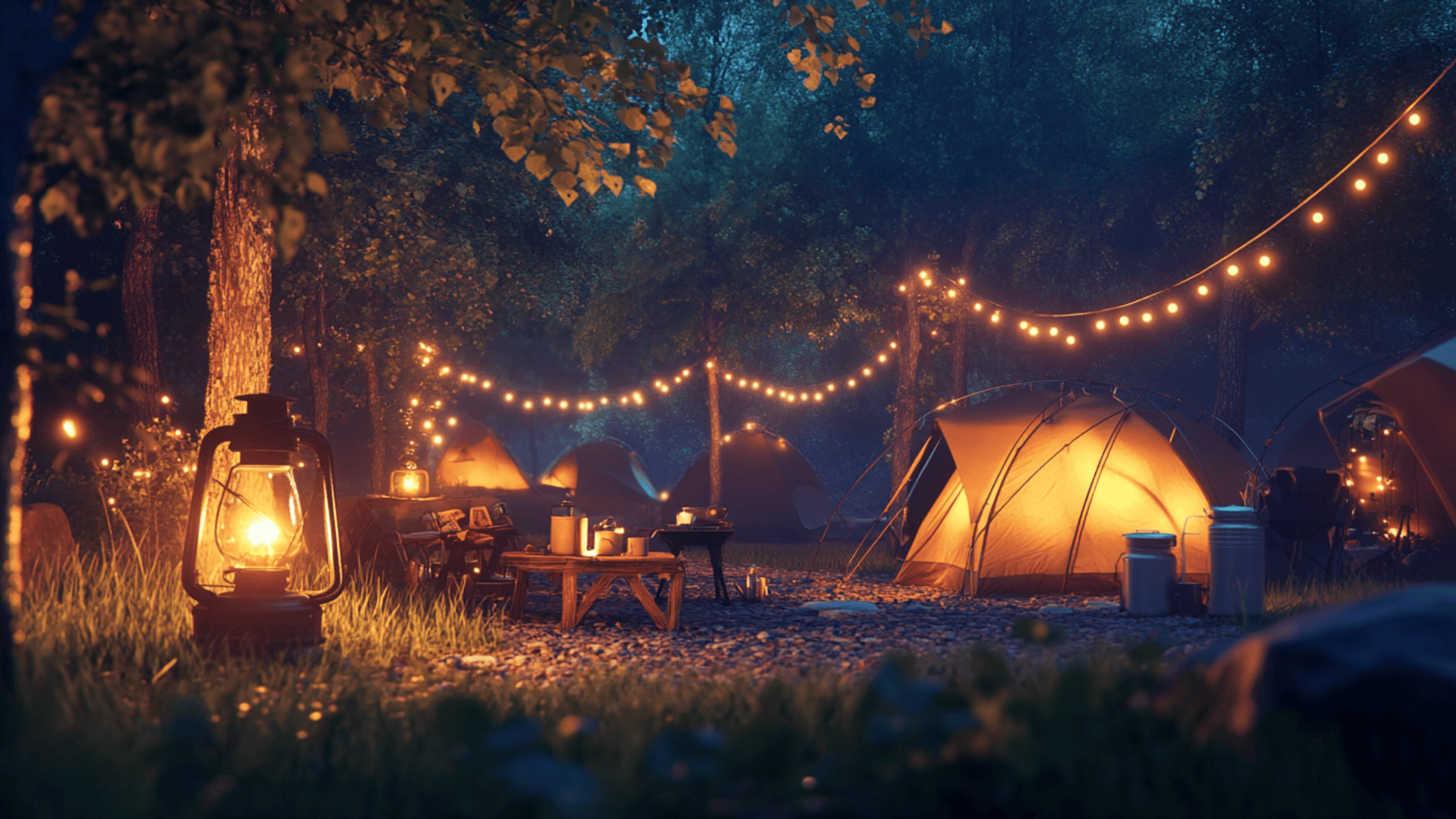
Good lighting isn’t just practical—it creates a welcoming camp atmosphere. A well-lit camp is also safer, preventing trips and falls while helping everyone find their way around.
Thoughtful lighting transforms your campsite after sunset, making evening activities possible and adding a touch of magic to your outdoor space.
- Central lanterns light up your common area for cooking and evening activities
- Personal headlamps free your hands for tasks or night walks
- String lights mark paths between tents and common areas
- Backup lights should be kept in every tent for emergencies
PRO TIP: Wrap string lights around a clear water jug to create a glowing lantern that provides gentle, diffused light, perfect for evening meals or reading.
Small solar stake lights can mark trip hazards around your site, while glow necklaces help track kids or pets after dark. Keep spare batteries in a waterproof container where everyone can find them.
Safety, Organization, and Pro-Level Tips
The small details often make the biggest difference between a good camping trip and a great one. Experienced campers know that preparation prevents problems, and smart systems save time and energy.
These final touches help your camp run smoothly through changing weather, unexpected challenges, and daily needs.
When your camp is safe, organized, and thoughtfully planned, you can focus on what matters most—enjoying the natural world and the people you’re sharing it with.
1. Safety and Site Maintenance
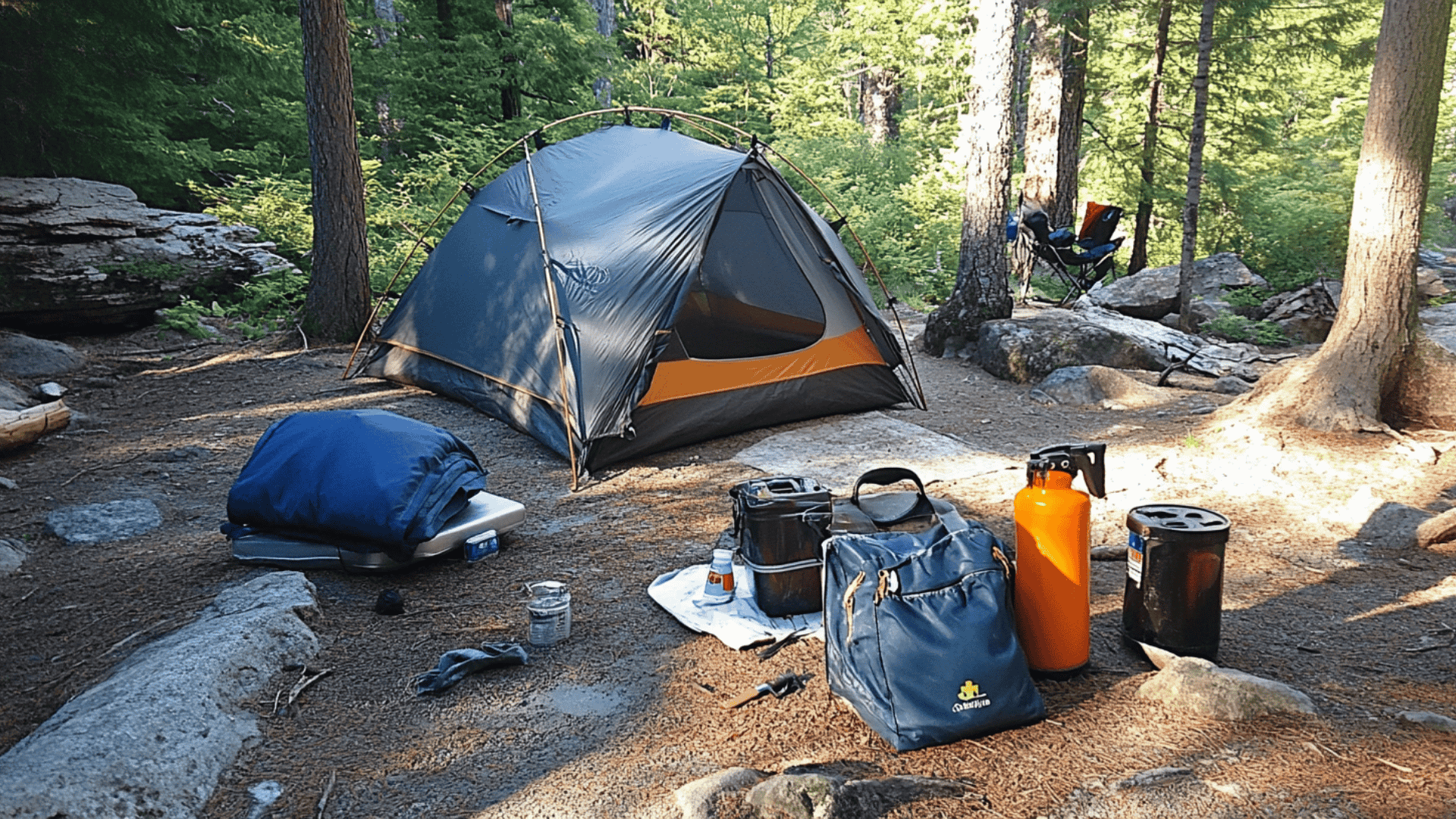
Staying safe at camp means planning ahead. Keep your first-aid kit somewhere everyone can find it—not buried in your car or deep in a backpack.
Store a small fire extinguisher near your cooking area, and make sure everyone knows how to use it.
PRO TIP: Take a photo of your completely set up campsite before your first trip day ends. If bad weather hits and you need to quickly rebuild, you’ll have a visual reference of how everything was arranged.
Each person should have a whistle and light source near their sleeping bag for nighttime emergencies. Take a few minutes each morning to clear sticks and rocks from your tent area to prevent tears and keep the space clean.
Teaching everyone basic safety rules on day one (like proper food storage and fire safety) prevents problems later. A small brush and dustpan help keep your tent floor clean and extend the life of your gear.
2. Efficient Gear Storage and Prep
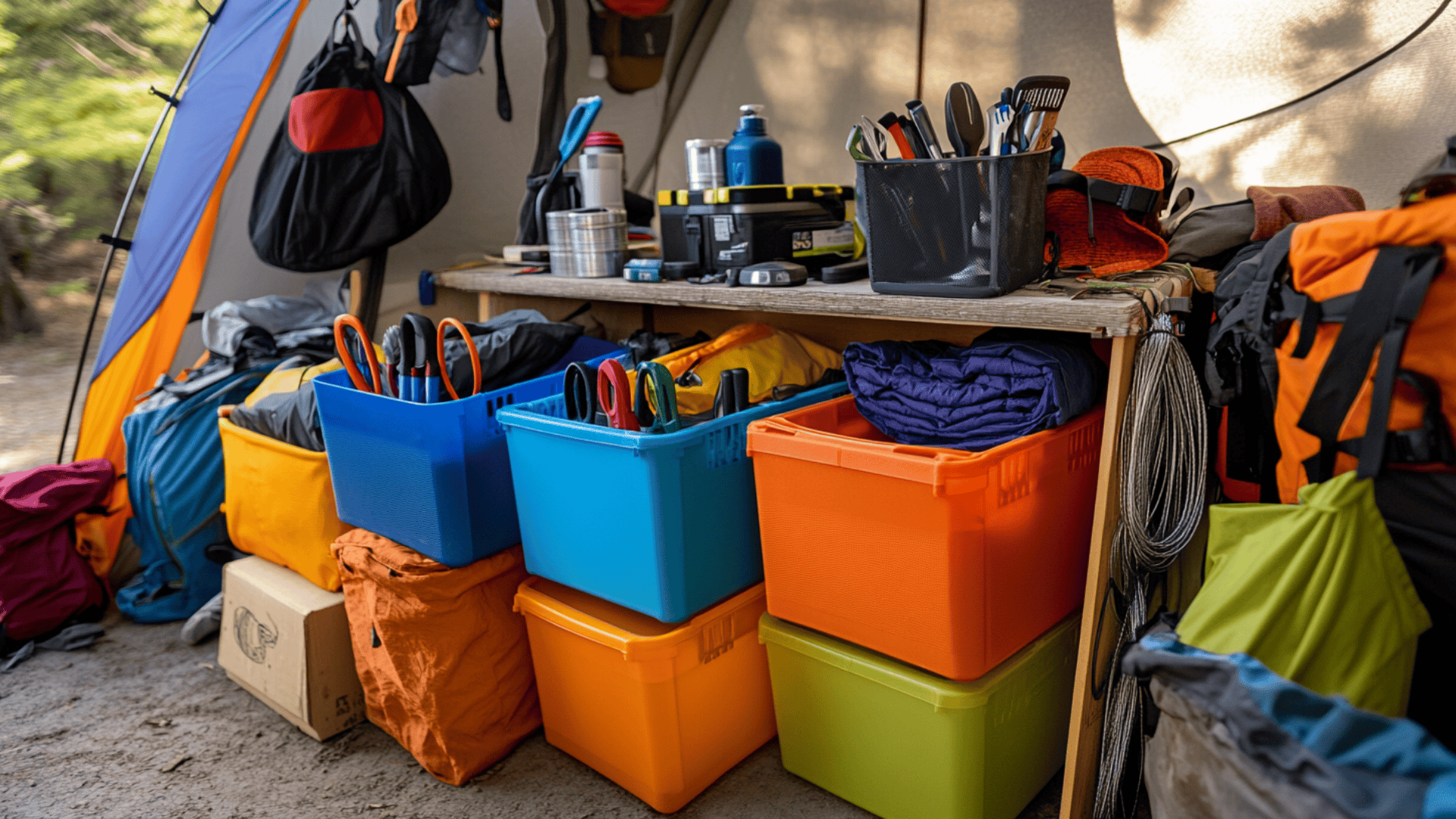
Smart packing starts at home with a system that makes setup and takedown quick. Good organization isn’t just about neatness—it’s about making your entire camping experience more enjoyable by having what you need when you need it. Time spent organizing at home pays off tenfold in the field.
The Bin Method:
- Kitchen bin: utensils, pots, dish soap, towels
- Tool bin: hammer, rope, duct tape, repair kits
- Lighting bin: all lights, batteries, matches
- Bedding bin: sleeping bags, pillows, extra blankets
PRO TIP: Create a master packing list in a note app or spreadsheet that you can copy and check off for each trip. Update it after each outing with items you wished you had brought.
Keep a basic toolkit loaded and ready between trips. This saves time and ensures you never forget essentials.
Using colored bags for each person makes finding personal items simple, while keeping commonly needed items (rain gear, bug spray) by the tent entrance saves hunting through packs.
3. Family, Group, and Long-Stay Hacks
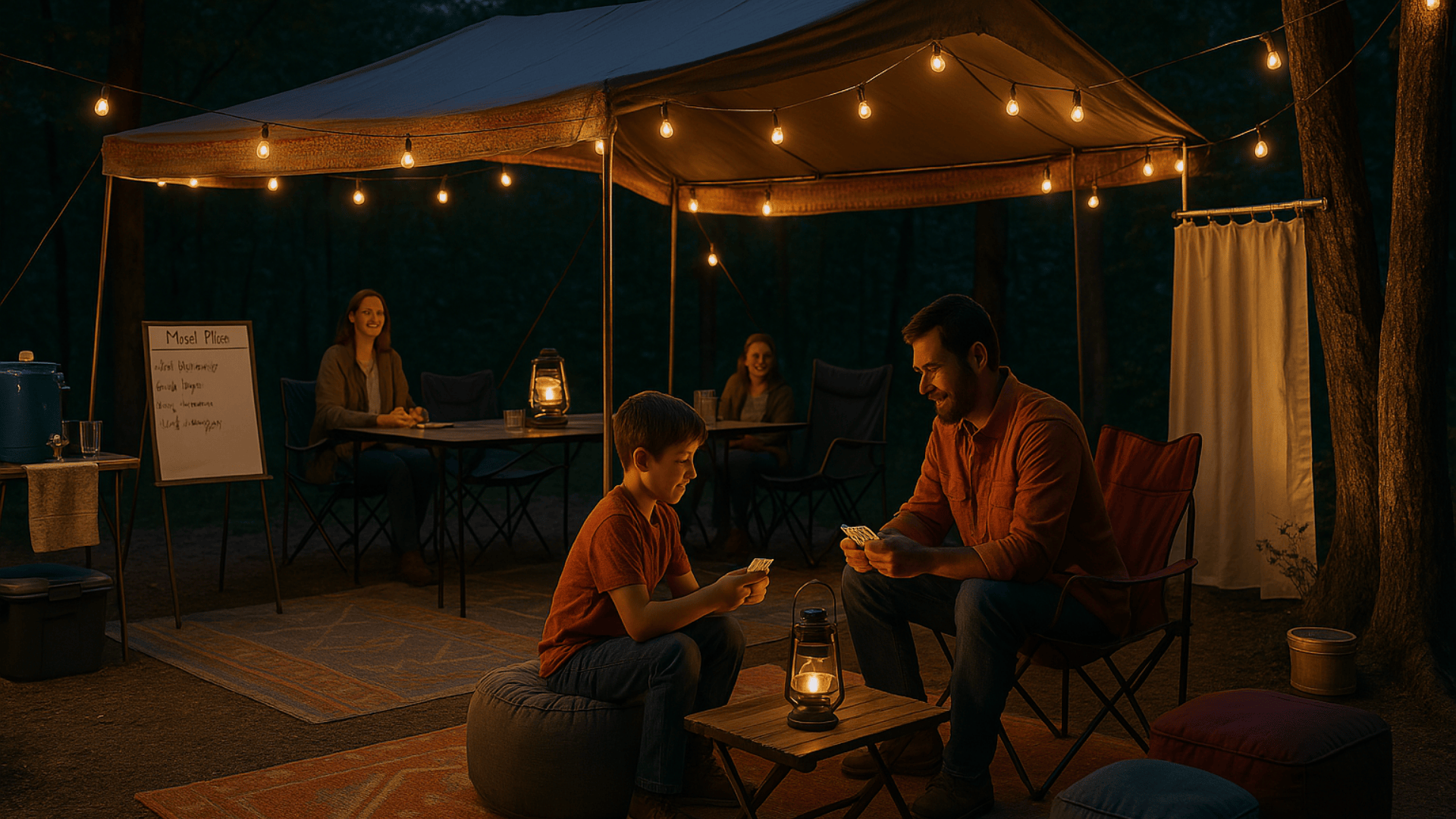
For extended stays or larger groups, these tricks make camp life smoother. The challenges of group camping multiply with each person, but so do the rewards when your site works well for everyone.
Taking time to create shared spaces that function well makes the whole experience more fun.
- Set up a dedicated hand-washing station with soap and towels
- Use large rugs to create clean “floor” spaces in common areas
- Pack games and activities for rainy days
- Bring extra tarps to create shade or rain protection
PRO TIP: Pack a shower curtain and rings to hang from trees or your canopy. This creates an instant changing room that packs down small and weighs almost nothing.
Portable seats, from folding chairs to inflatable ottomans, give everyone a spot to relax. For groups, a whiteboard for messages and meal plans prevents confusion.
Simple pleasures like music (kept at respectful volumes) and books make downtime enjoyable. Adding solar shower bags and privacy screens makes longer stays much more pleasant.
Wrapping It Up!
Mastering your camp setup transforms ordinary outdoor trips into extraordinary experiences. The perfect campsite isn’t about fancy gear—it’s about thoughtful arrangement that makes outdoor living comfortable and stress-free.
When each zone serves its purpose well, from sleeping areas to kitchen stations, camping feels less like roughing it out and more like a well-designed retreat.
Remember that camp setup improves with practice. Each trip teaches new tricks to add to your outdoor toolkit. Take photos of successful layouts for future reference and refine your system over time.
With these fundamentals in place, you’re ready for countless starry nights and sunrise coffee moments in your perfectly organized outdoor home.
Come back for more helpful travel tips, gear recommendations, and campsite reviews.




